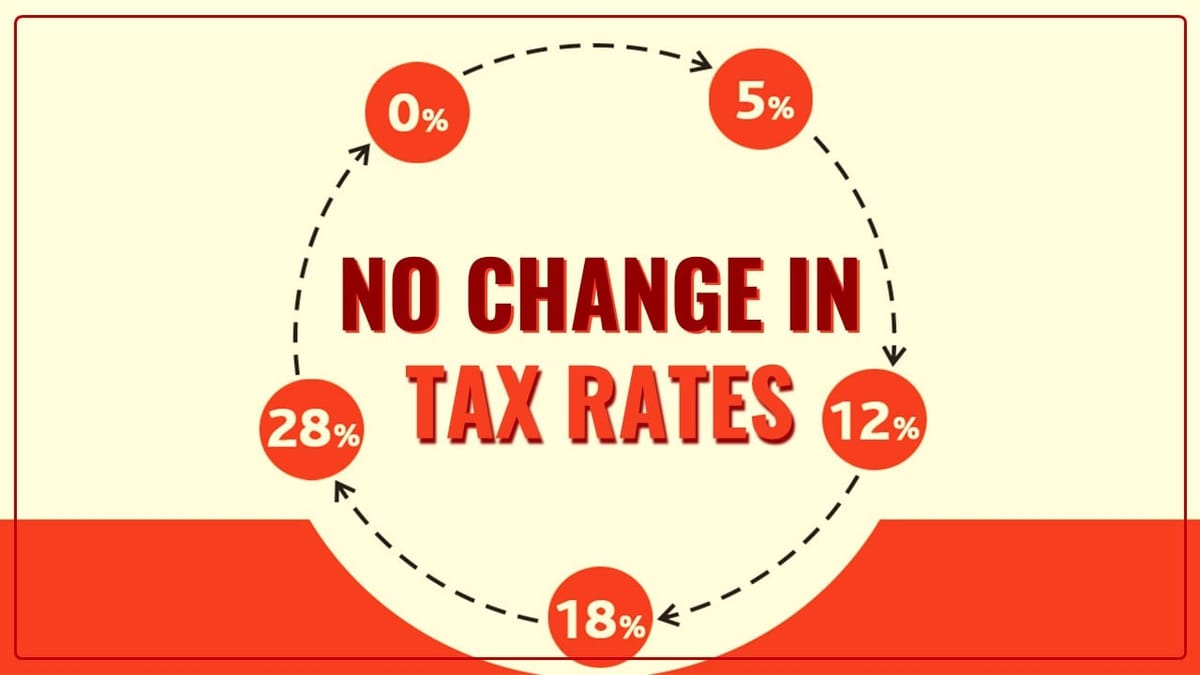Reetu | Feb 5, 2024 |

Revenue Secretary hints towards no Change in Tax Rates
Revenue Secretary Sanjay Malhotra says the government aims to establish a stable and low-tax framework while also ensuring that GST loopholes are closed.
Let’s see what the Excerpts say:
Absolutely, we have chosen continuity and stability. Moreover, this was an interim budget.
The effective tax rate is quite reasonable. Customs duty, like other indirect taxes, is revised annually. We did not accomplish it this time because the budget was interim. In the medium term, the emphasis is on enhancing tax services, making things simpler, rationalising taxes where necessary, and leveraging more technology to broaden and deepen the tax base through increased information and economic formalisation. We don’t want too many changes in tax rates.
We are not thinking about any particular sector. There are concerns about fictitious or non-existent enterprises in the context of GST and associated fraudulent billing. GSTN is built on trust, and we’ve seen the benefits of trust-based compliance. However, some dishonest persons have taken advantage of the system to avoid paying taxes by passing on the credit. If you choose not to use your input tax credit, the system will check when you pay your taxes the next month.
If you passed on the credit, it means you collected tax from the customer, and you must pay. Today, the system allows taxpayers to update it. This was done for honest taxpayers, however, due to misuse, we must replace it.
The GST Council makes the changes. Major modifications are based on ministers’ recommendations. Currently, there is no recommendation.
We do not want to phase away the old or traditional tax system with exemptions and deductions. However, the goal is to promote a simpler tax system, whether for corporate or personal income tax. That is why the new system was made more appealing. By making the new regime the default scheme… and using the tax calculator to help people determine which one to choose.
We estimate it to reach 10 crore in two to three years, assuming a 10% growth rate.
You are correct: there is a benefit to preserving stability. A uniform form has been created with the goal of making the process easier and more user-friendly for taxpayers. Forms were originally developed for paper returns before being digital. We’ve now completed a metamorphosis and examined returns through the lens of electronic returns.
We intend to implement the scheme within two months. Taxpayers do not need to do anything because the Income Tax Administration will be updating its records. Given the possibility of several entries against one person, the maximum amount that can be removed per person is Rs 1 lakh. The number of entries is 1.1 crore, whereas the number of unique beneficiaries would be less than one crore.
Previously, banks were just questioned whether GST was linked to Aadhaar. Now we’re tightening it. We are undertaking a GST trial in Gujarat and Puducherry, and registration is based on biometric authentication rather than OTP. Biometrics requires the individual to visit the centre. Biometric authentication will be necessary in high-risk scenarios.
In case of any Doubt regarding Membership you can mail us at [email protected]
Join Studycafe's WhatsApp Group or Telegram Channel for Latest Updates on Government Job, Sarkari Naukri, Private Jobs, Income Tax, GST, Companies Act, Judgements and CA, CS, ICWA, and MUCH MORE!"